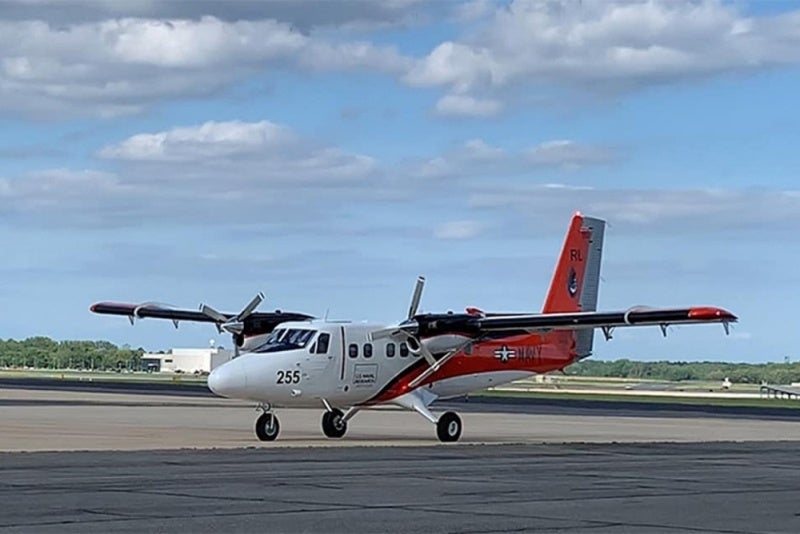
The US Naval Research Laboratory (NRL) has added an aircraft to Scientific Development Squadron ONE’s (VXS-1) existing fleet to help boost airborne research capabilities.
VXS-1 is the US Navy’s science and technology research squadron.
The UV-18 Twin Otter aircraft has joined the squadron’s fleet of aircraft research platforms, including three NP-3C and P-3C Orions, an RC-12 King Air, and 12 TigerShark unmanned aircraft systems.
UV-18 is the military equivalent of the DeHavilland DHC-6 Twin Otter utility aircraft. Developed by de Havilland Canada and marketed by Viking Air, DHC-6 is a high-wing, unpressurised, twin engine turbine powered aircraft with fixed tricycle landing gear.
VXS-1 commanding officer commander Erik Thomas said: “The Twin Otter is a safe, highly manoeuvrable and extremely versatile aircraft. The fact that it is unpressurised simplifies modifications and will accelerate our ability to get projects airborne for the Naval Research Enterprise.”
The UV-18 is expected to complement the squadron’s ‘Warlocks’ fleet by bringing slow flight capabilities.
How well do you really know your competitors?
Access the most comprehensive Company Profiles on the market, powered by GlobalData. Save hours of research. Gain competitive edge.

Thank you!
Your download email will arrive shortly
Not ready to buy yet? Download a free sample
We are confident about the unique quality of our Company Profiles. However, we want you to make the most beneficial decision for your business, so we offer a free sample that you can download by submitting the below form
By GlobalDataThe aircraft comes with an operational payload capacity of up to 3,000lb.
It can offer customers a slow flight speed of 85mph and reach a maximum cruise speed of 190mph.
In addition, the aircraft has the capability to reach an altitude of 13,000ft and fly for a duration of six hours.
Thomas added: “Using our squadron’s aircraft, scientists and engineers can install and test the latest technology they are developing in an operational environment anywhere in the world. We truly turn their ideas into reality.”
VXS-1 has delivered support for a wide range of research projects such as magnetic variation mapping, hydro-acoustic research, bathymetry, electronic countermeasures, gravity mapping, and electro-optical and radar research.



